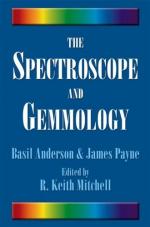|
This section contains 937 words (approx. 4 pages at 300 words per page) |

|
Any instrument used to examine the component colors of light is called a spectroscope. The effect of light separated into its individual colors is often seen in the form of a rainbow, which results when rays of sunlight pass through tiny droplets of water that remain in the atmosphere after a rainstorm. The tiny water droplets function as natural spectroscopes, revealing a spectrum of colors.
The light displayed by a spectroscope is called an emission pattern, or spectrum. If the observed light is white, the spectrum will contain all the primary colors; however, if the light itself is colored, the emission spectrum will be incomplete. A prism simple type of spectroscope. Sir Isaac Newton (1647-1727), using a glass prism, was the first to realize that white light was actually composed of all the colors within the spectrum mixed in equal proportions.
The first spectroscope precise enough for laboratory...
|
This section contains 937 words (approx. 4 pages at 300 words per page) |

|


